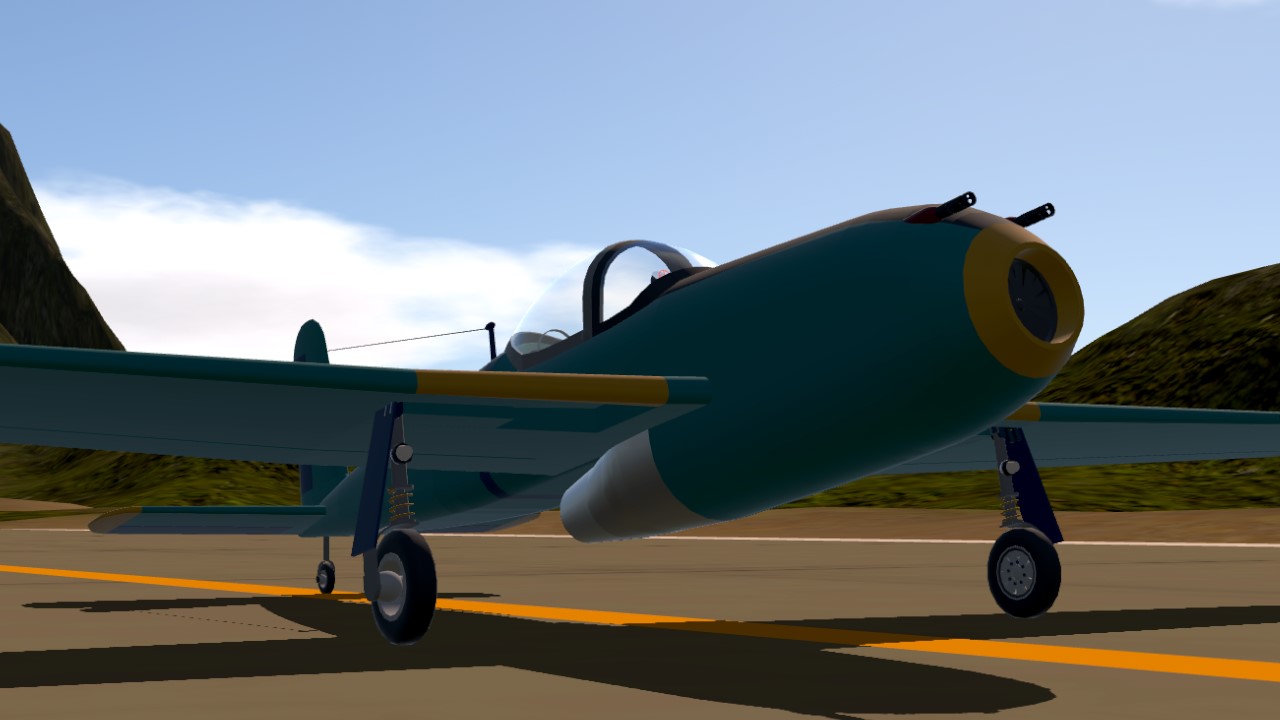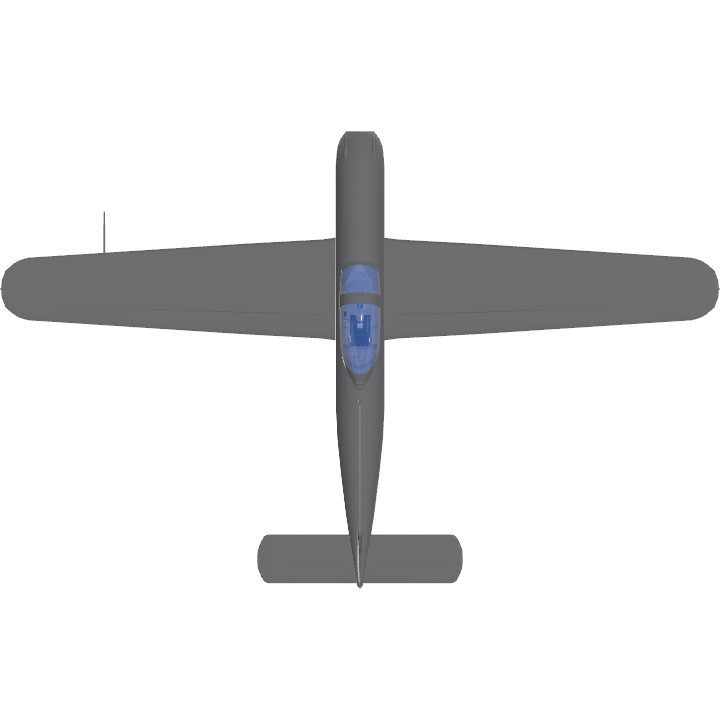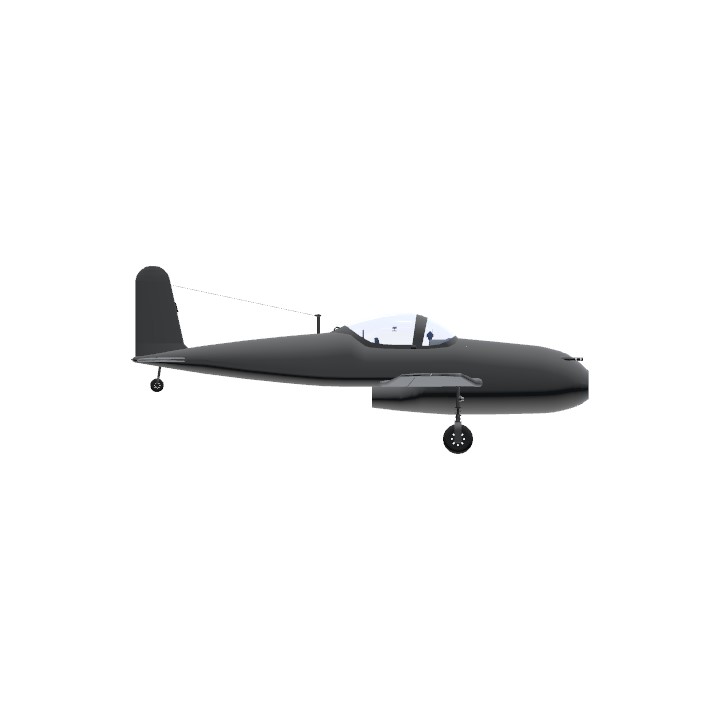ELEC MOTOR COMPANY EF-14 "Lancer"
Envisioned as a revolutionary fighter for the Air Force, the EF-14 was EMC's first venture into jet power. In order to reduce design time and keep the machine as simple as possible, the aircraft design was based on an older EMC piston-powered aircraft. Most systems were kept simple for ease of maintenance, even by inexperienced personnel. The only significant changes were the redesign of the aircraft's nose and the increase in wingspan.
Although, a forward-looking attempt to catch up with the great powers, the aircraft did not achieve the desired performance. It was slow, lightly armed, and obsolete from its very first flight. Nonetheless, it was a rugged machine, made out of steel and wood, capable of withstanding tough landings by rookie pilots.
Because of the lackluster performance, the EF-14 was a terrible fighter, but the Lancer was nimble, tame and forgiving, making it the perfect platform to train new pilots for the jet age.
Design work started in early 1946 and by the end of the year the new design was ready. Sadly, the engines wouldn't be ready until 1948. The first batches of the new JT-7 Engine were troubled by problems that were not solved until 1950, delaying the type's first flight until late 1950. It finally entered production in 1951 and retired in 1982.
Controls
Act. 1: Ignition
Act. 2: Guns
Act. 3: Landing lights
Act. 4: Position lights
Act. 5: Radio (only visual)
Act. 6: None
Act. 7: Unlock tailwheel
VTOL: Flaps
Trim: Trim
G: Landing gear
General characteristics
First generation jet fighter/trainer
Crew: 1
Length: 8.2m
Wingspan: 12.9m
Powerplant: One JT-7 axial-flow turbojet
Top speed: 358 km/h at sea level. 430 km/h at 3000m. 554 km/h in a dive.
Armament: Two 20mm cannons
Number built: 452
Additional notes
The aircraft has a few unusual characteristics. First, due to the engine's position, the nose tends to pitch up, but this is easily countered by applying a little trim. Also, because of its large wingspan, lack of air brakes, and low weight, the aircraft has a relatively low landing speed (140 km/h-120 km/h). Finally, the pilot needs to unlock the tailwheel to maneuver on the ground and lock it in the air.
Specifications
Spotlights
- BuckFlight 3 hours ago
General Characteristics
- Created On Windows
- Wingspan 42.3ft (12.9m)
- Length 26.9ft (8.2m)
- Height 11.1ft (3.4m)
- Empty Weight 1,830lbs (830kg)
- Loaded Weight 4,488lbs (2,036kg)
Performance
- Power/Weight Ratio 0.75
- Wing Loading 17.6lbs/ft2 (85.7kg/m2)
- Wing Area 255.6ft2 (23.8m2)
- Drag Points 2316
Parts
- Number of Parts 288
- Control Surfaces 8
- Performance Cost 1,246




